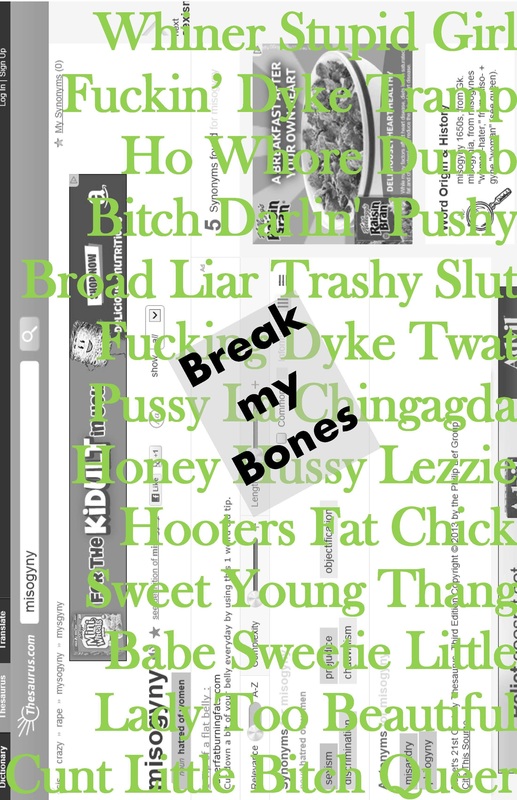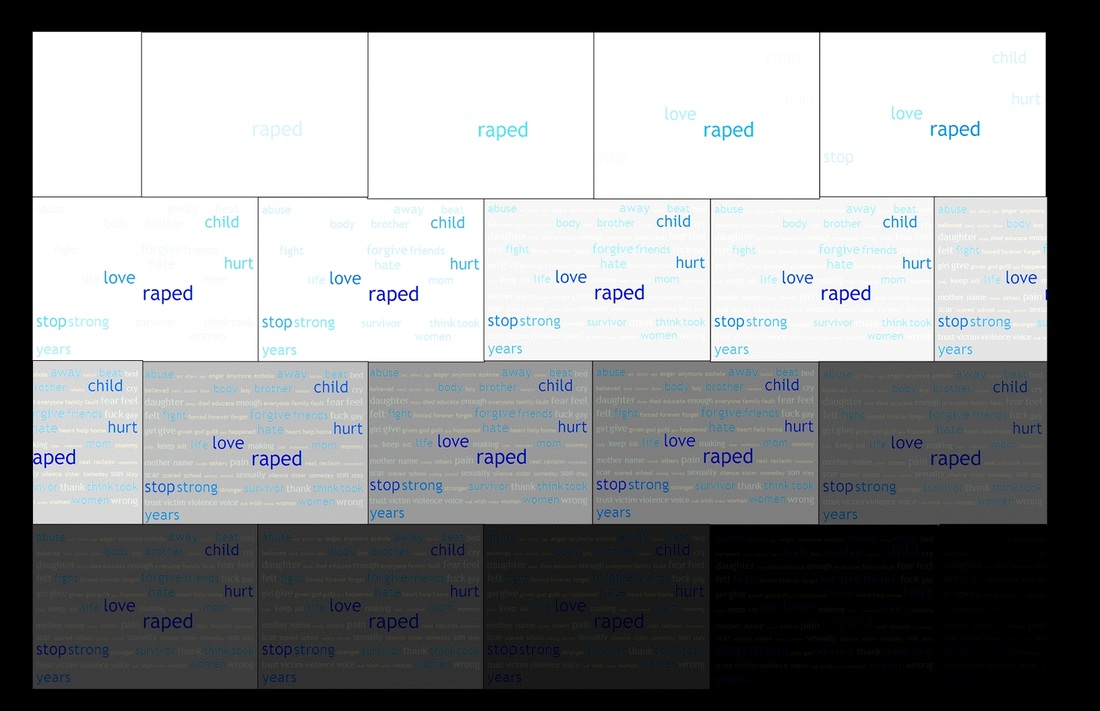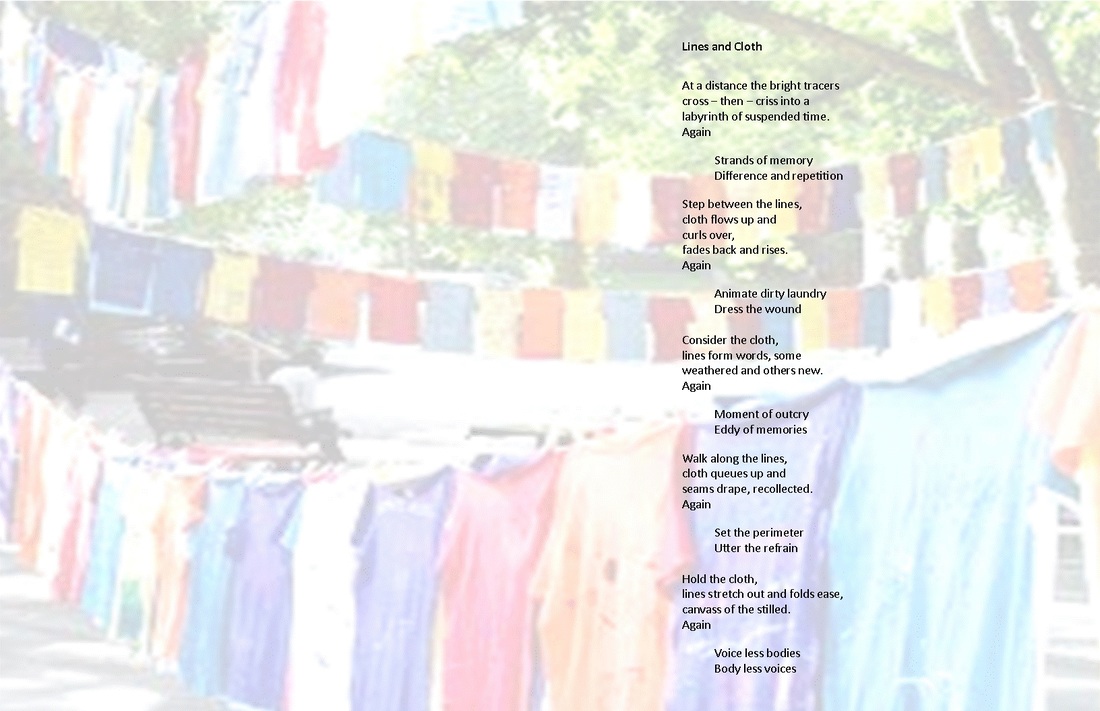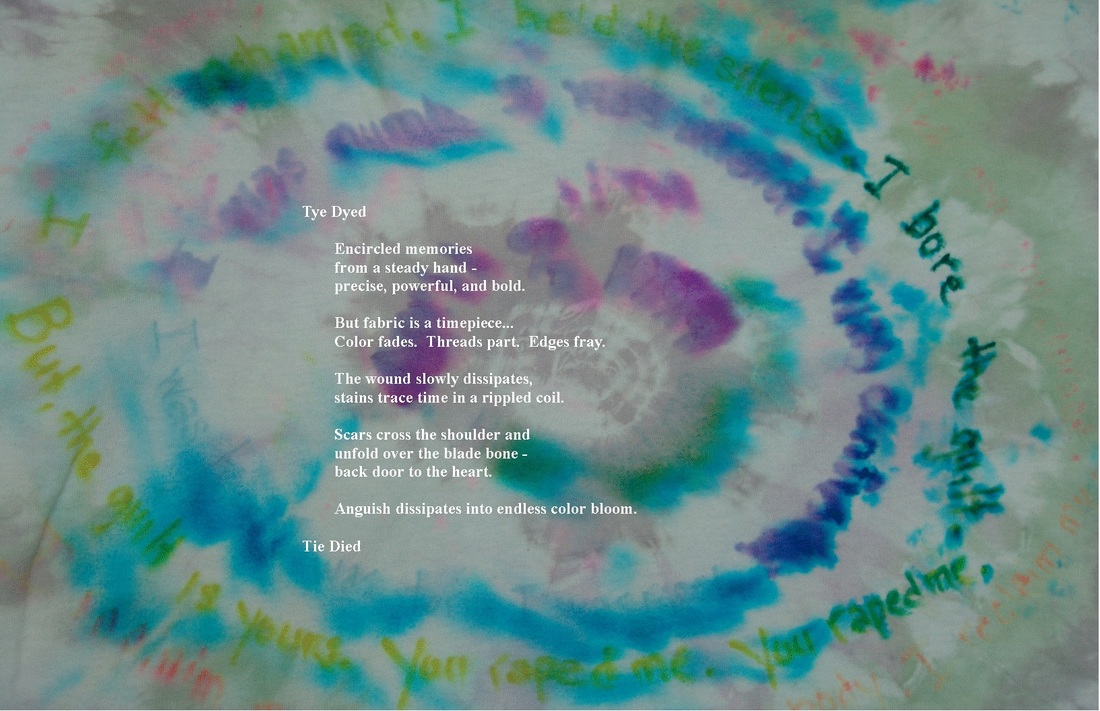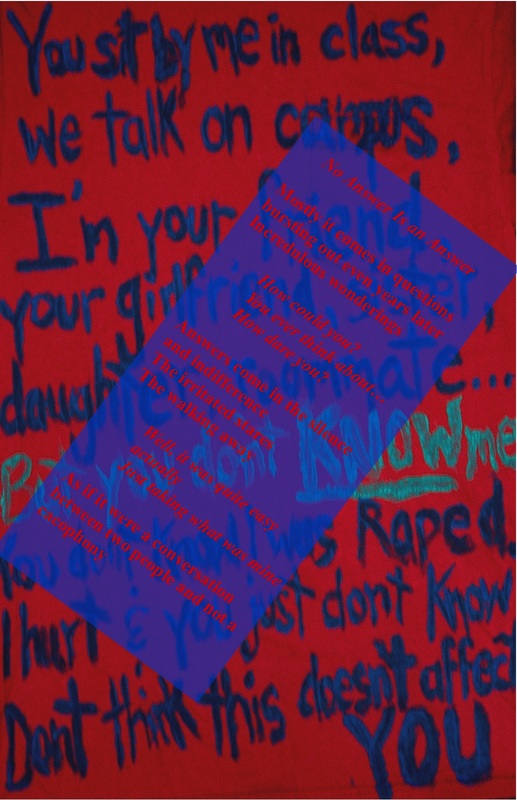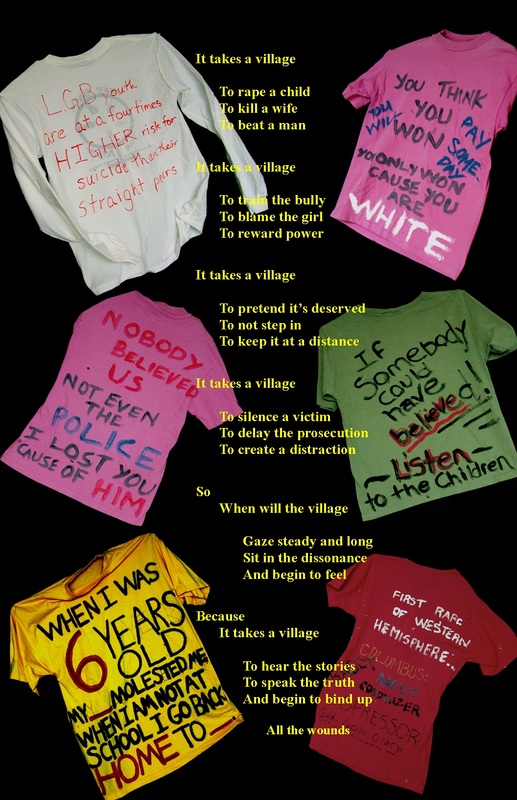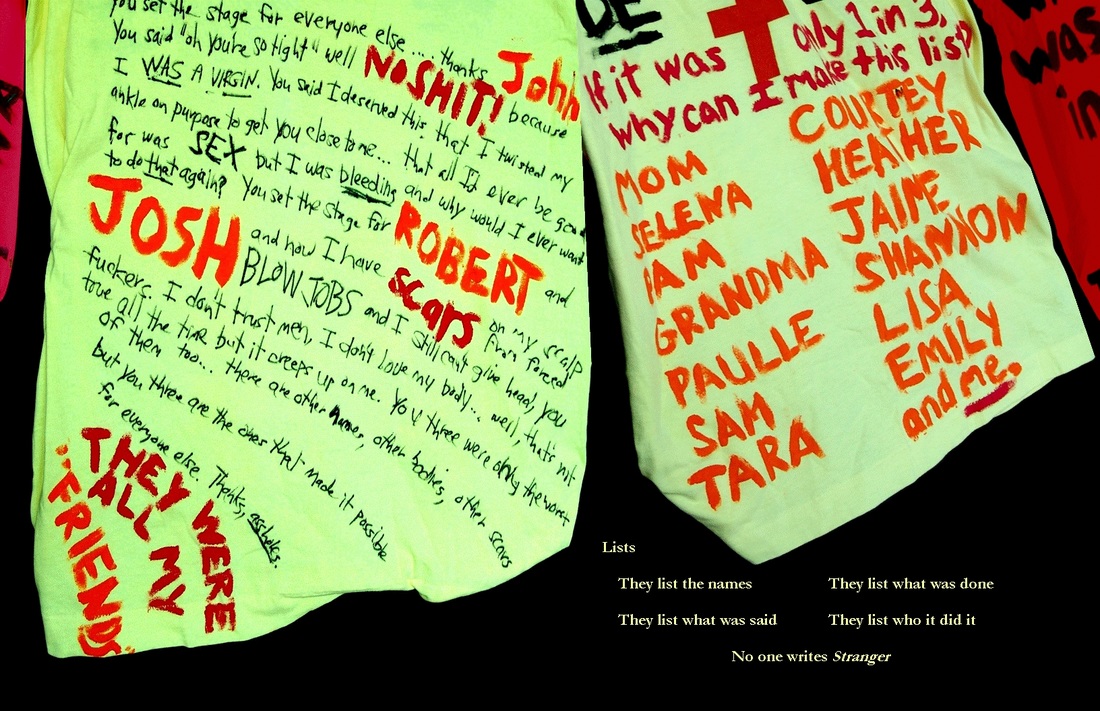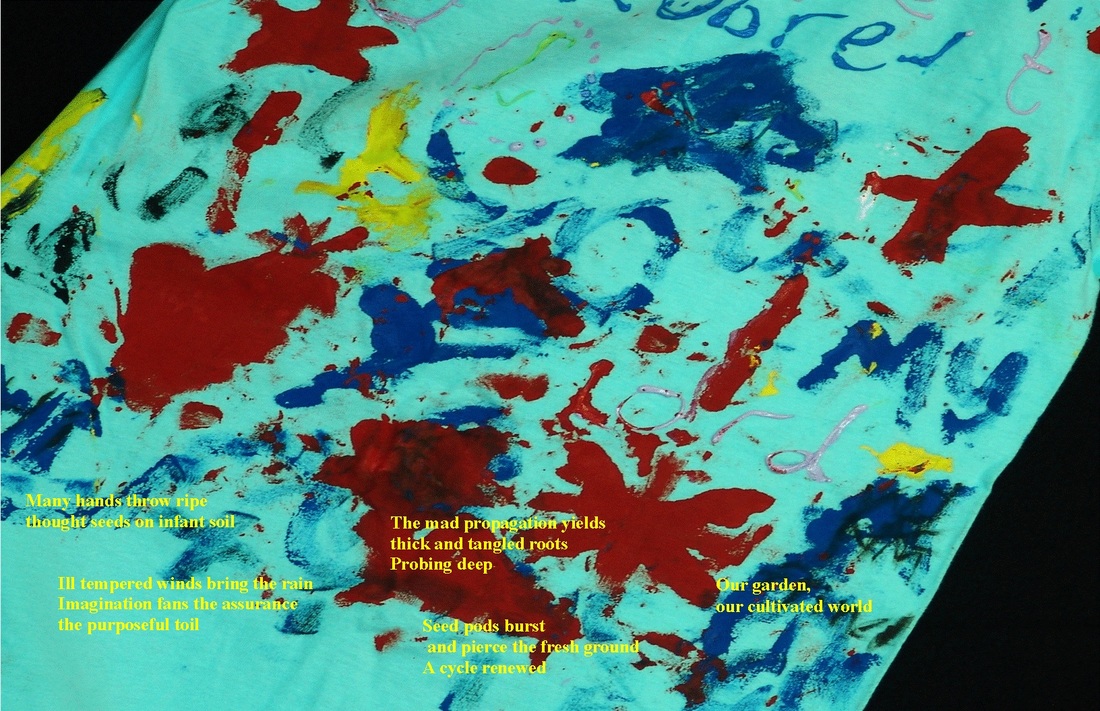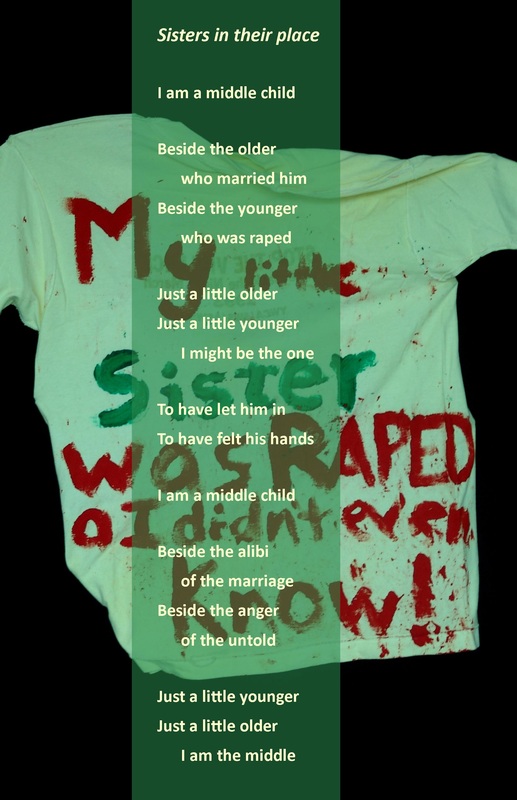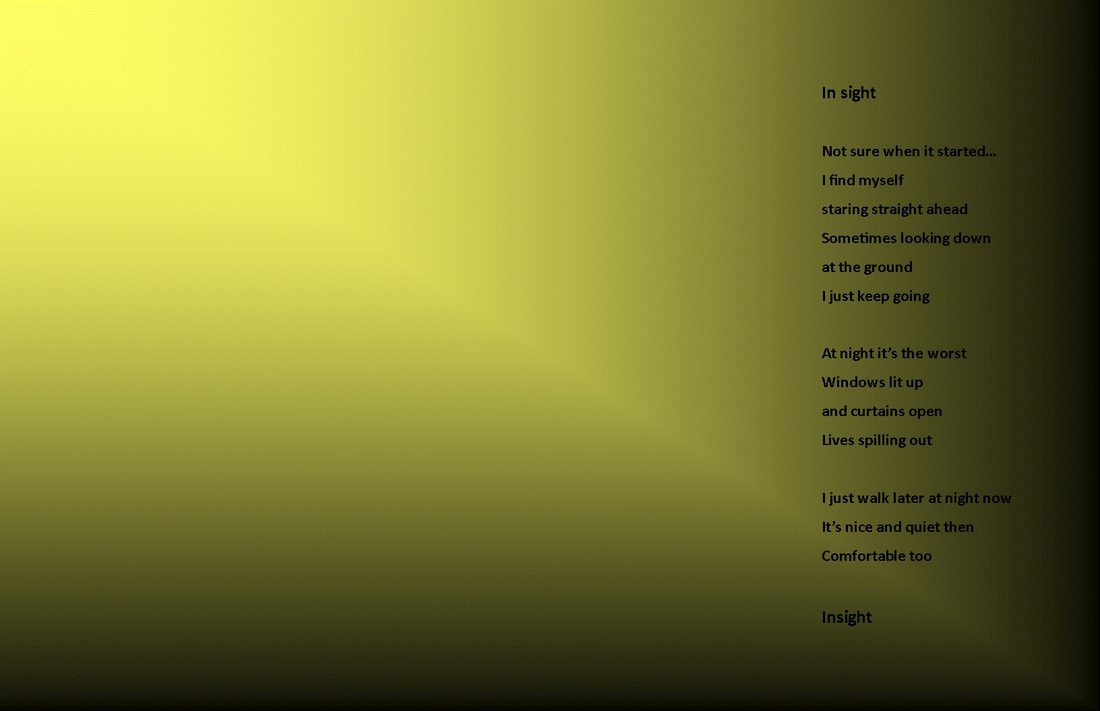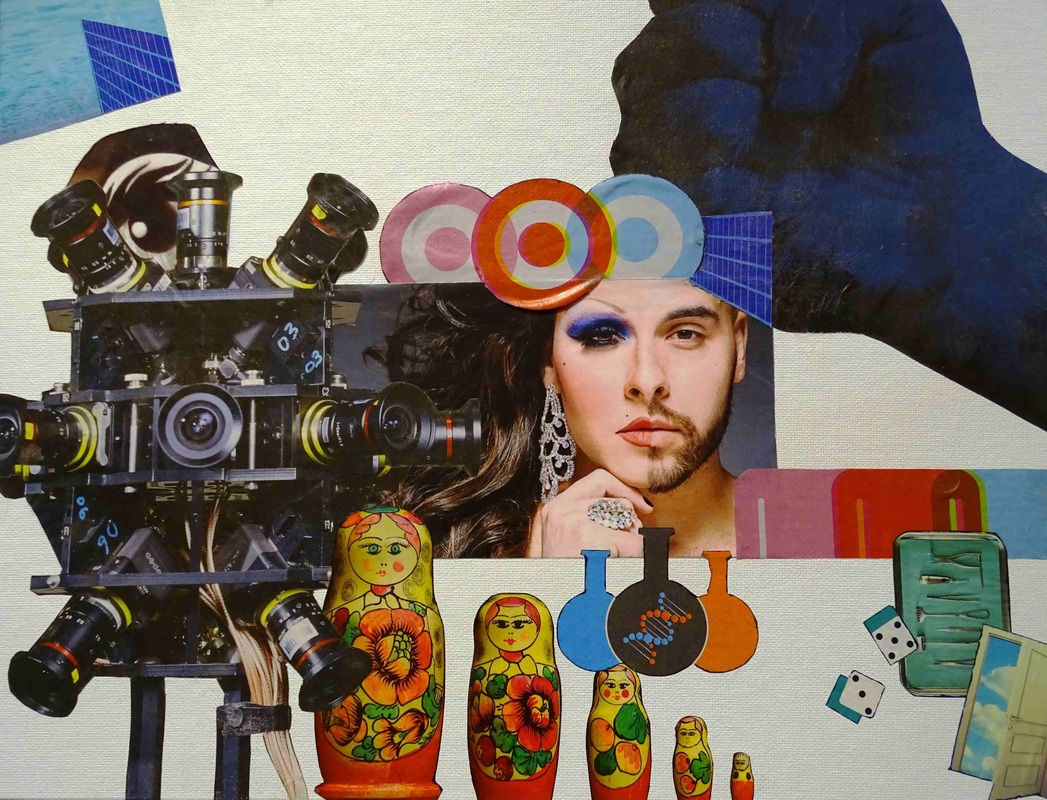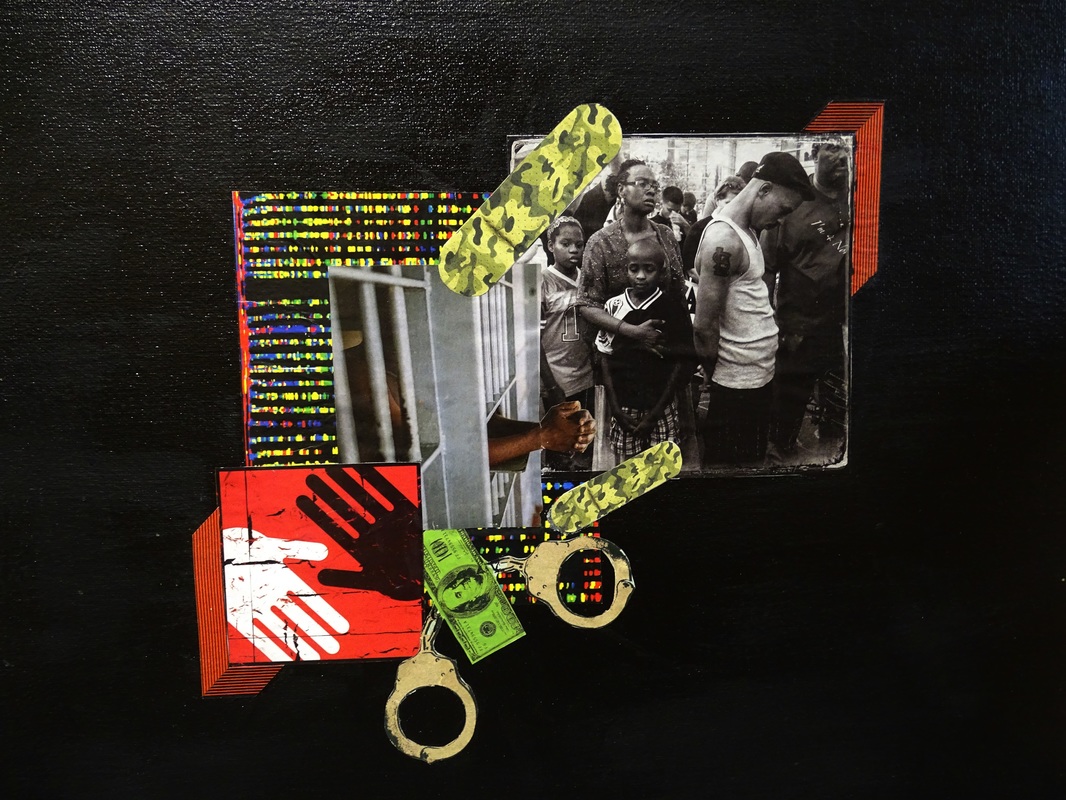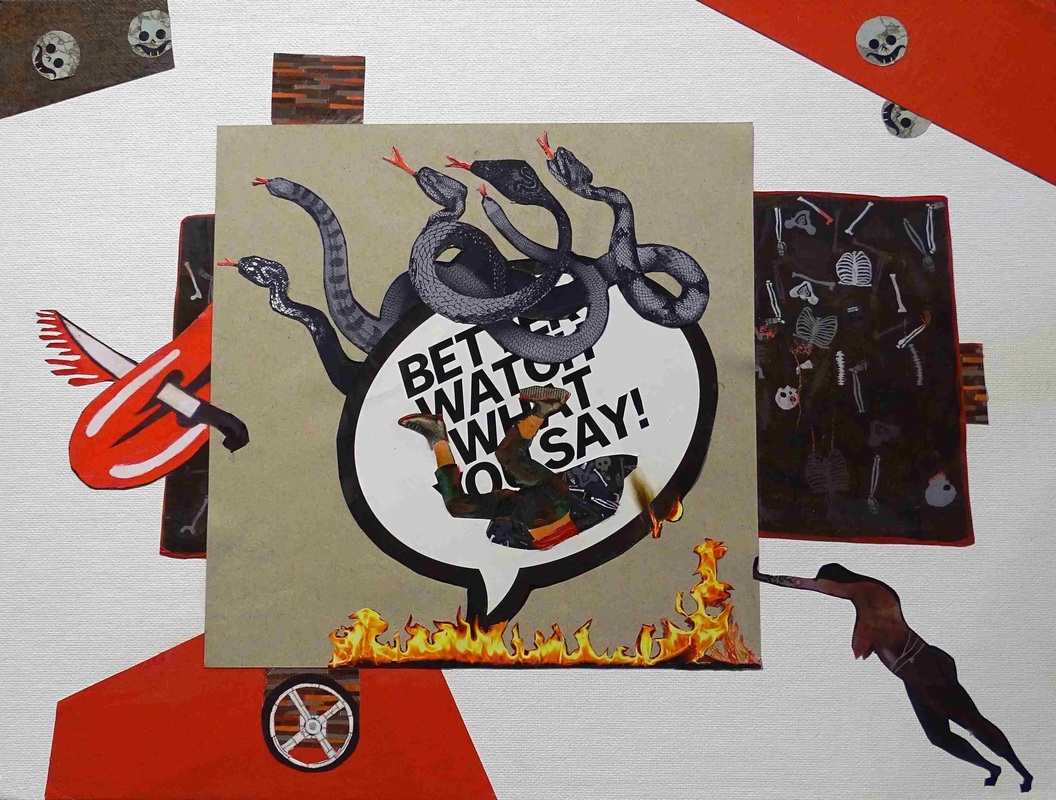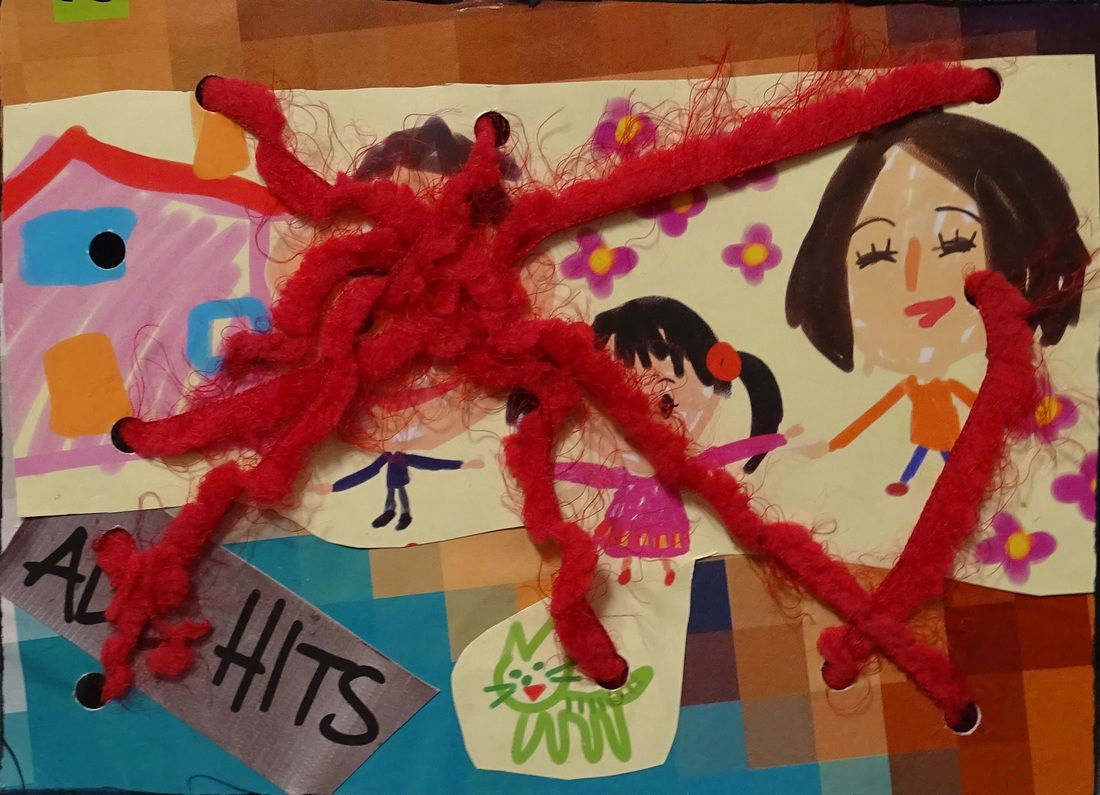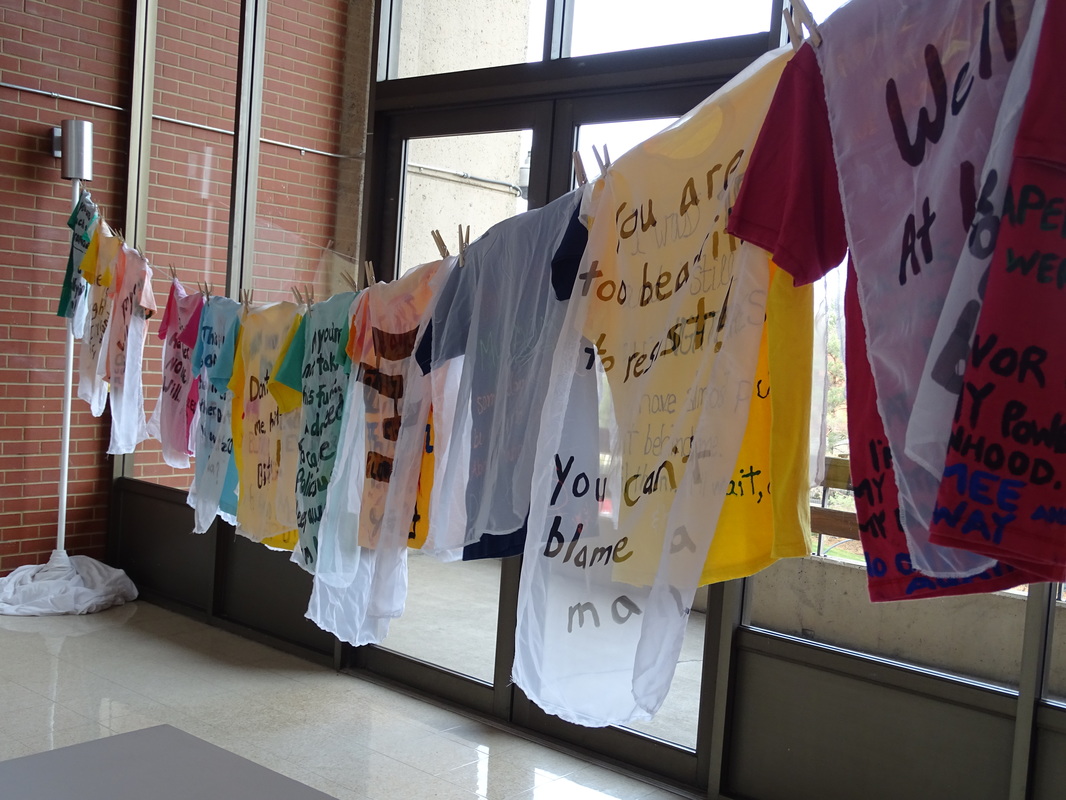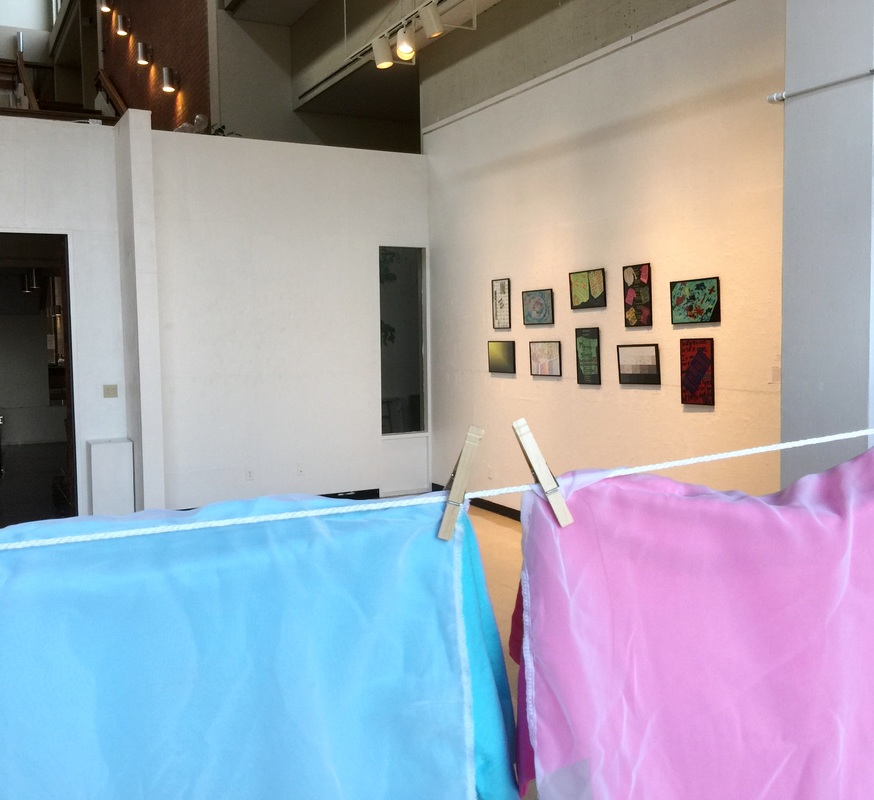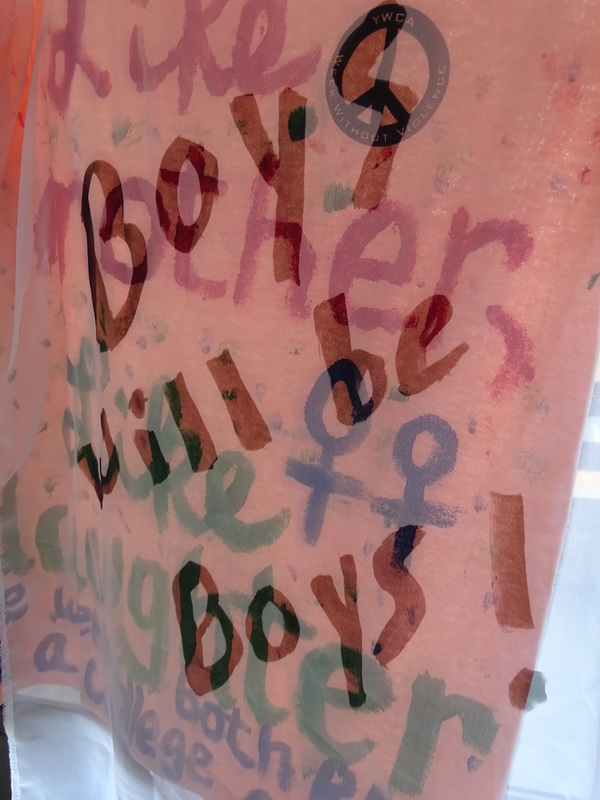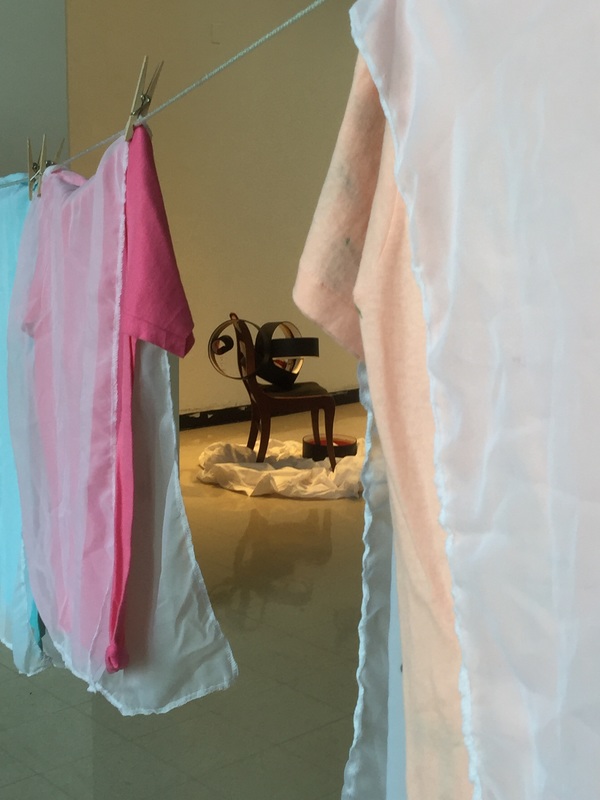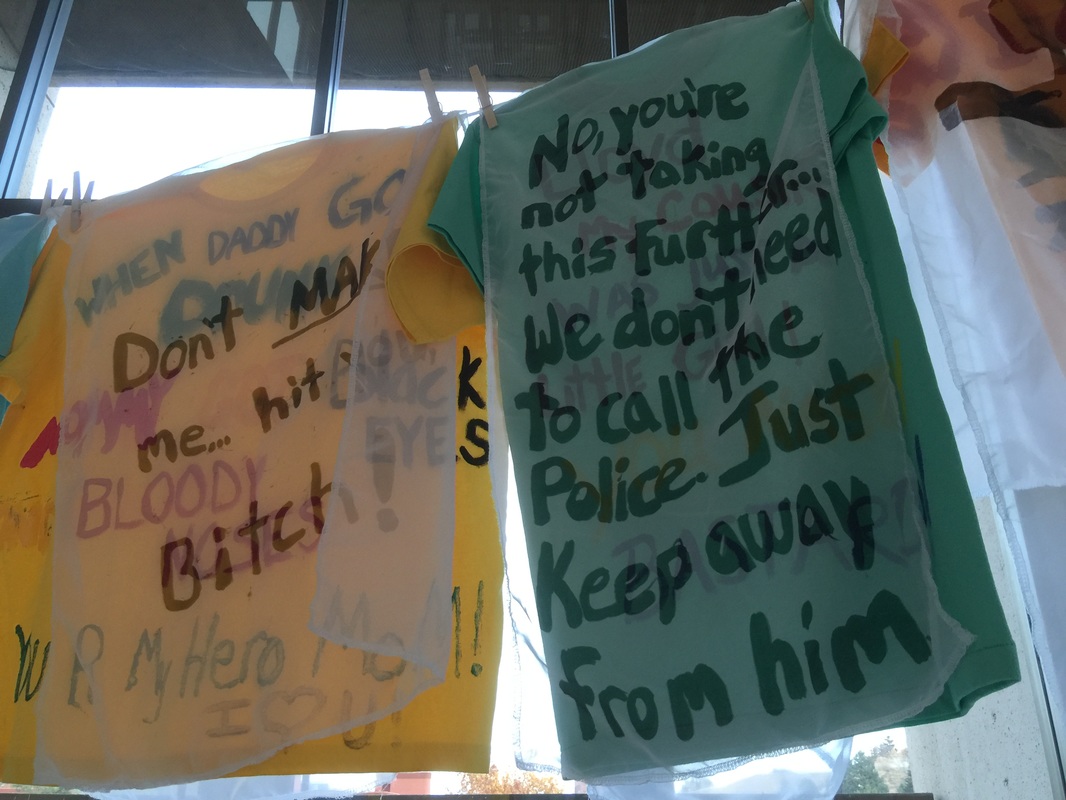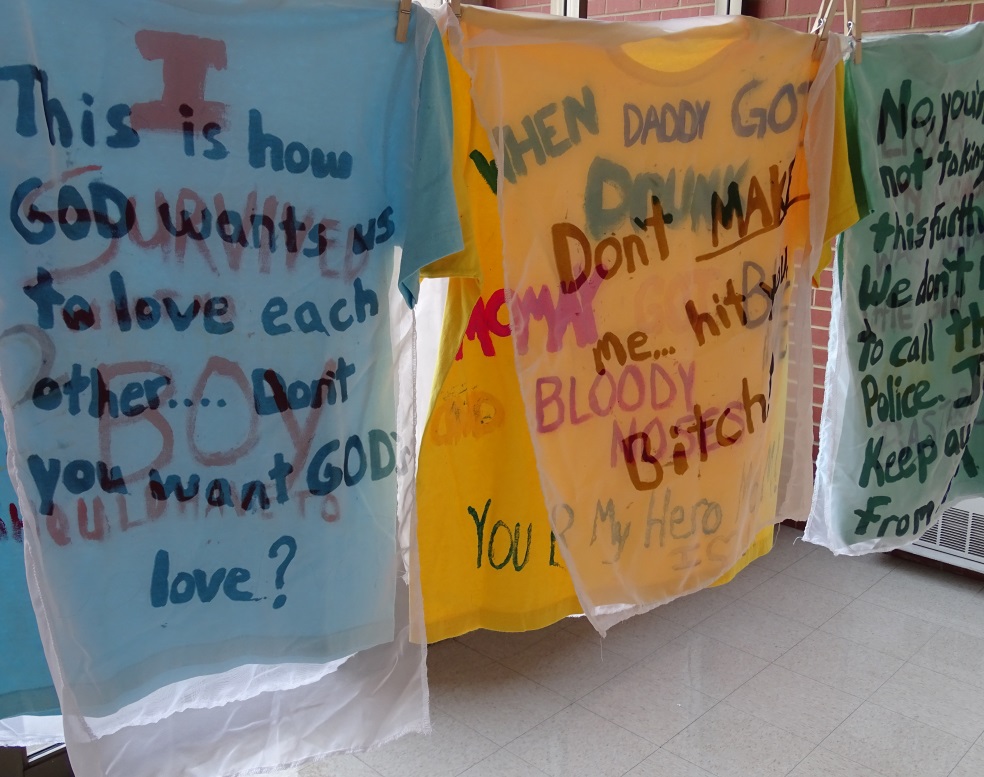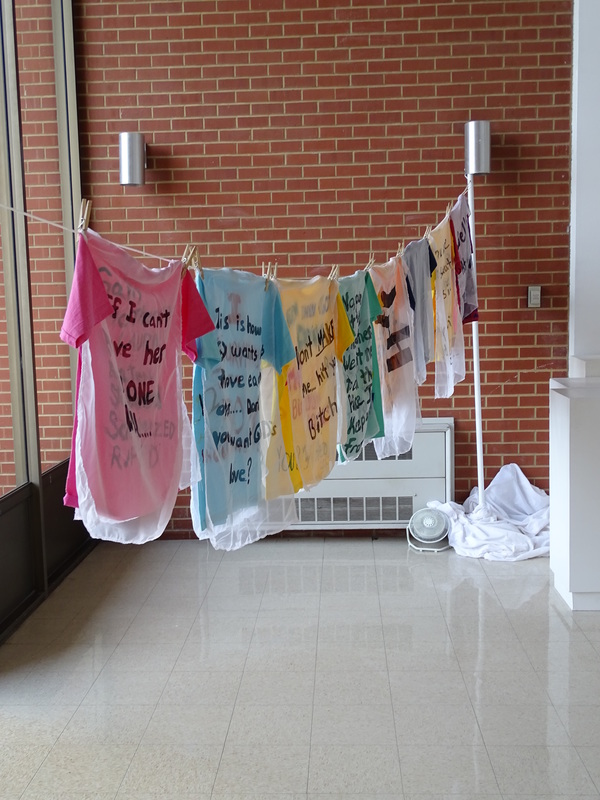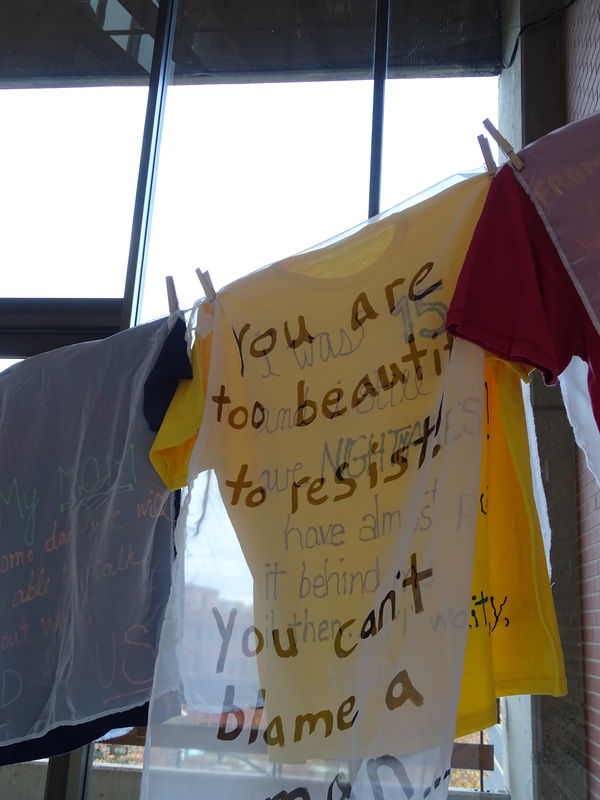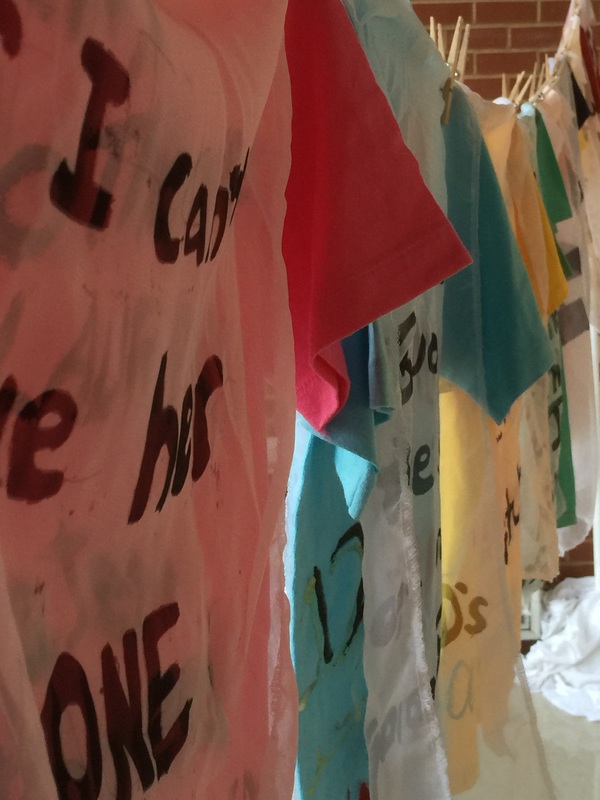Artist-Researcher Ekphrasic Responses
The categories and themes found in the WSU Clothesline Project artefacts and narratives from Phase 1 were used to create four Artist-Researcher ekphrasic works, found poetry, and a gallery installation display.
See slide shows and, for enlarged images, the galleries below.
See slide shows and, for enlarged images, the galleries below.
|
Reflective Transaction
Digital Print series, 1-10 This series of 10 works is part of 3-4 year aesthetic response to the Clothesline Project narratives. It is attempt at understanding the experience of violence as situated in a particular context, condition, time, and interactive environment.
In the Replies to Wounds project the word Transaction describes inquiry and knowledge as centered on dynamic relational experience and dialog (Dewey, 1930; Dewey & Bentley, 1949). The creation and display of artful works give rise to an intensified opportunity for reflection – even interruptions in thinking – on dominant cultural discourse and simple binaries between self and other, especially in regard to difficult, even traumatizing, experiences such as interpersonal violence. |
Tell:
Experience, Family, University, Police Paper, paint, fabric, found object installation This piece is about someone who has experienced violence – a sexual assault - and then tries to tell others about what happened. Not only does she/he have to deal with what has happened, she/he has to negotiate the intersecting relationships, bureaucracies, perspectives, fear, and prejudices of others. The chair is empty because, more often than not, the stories of most victims – along with the crimes committed – are silenced, disappeared or called something else. Double or ongoing victimization is about the immediate suffering endured by survivors of violence as well as the complex aftermath: leaving a violent relationship, reporting a crime to the police, trying to telling family and friends, and going on with one’s life and relationships.
|
Labyrinth
|
Alibi
Fabric, paint, & multimedia installation The t-shirts on the clothesline were created by Clothesline Project participants. The sheer fabric overlay and black lettered statements on top of the t-shirts were taken from different Clothesline Project t-shirts and created from descriptions and direct quotes that were made by perpetrators of violence to their victims.
Cultural representations and individual experience of violence can be rewritten and re-contextualized by those who have the narrative authority to do so. Rape is a special kind of crime in relation to the narratives constructed about it, in the alibis it permits. Often, sexual violence is discursively cloaked, re-presented, and turned into a very different story. The crime itself is ‘alibied’ or not where and how we expect to find it. The action of perpetrator is retrospectively described in terms of persuasion, seduction, romance, common drunken lust, or religious fervor. Within this constructed alibi, the victim’s truth-telling is shifted easily into what can be labeled as madness, ridiculous imagining, over-reaction, audacious lying, money grabbing, and revenge. The stories about sexual violence are covered and inscribed ‘elsewhere and as something else’ but, at the same time, are still ever present in cultural discourse and in individual experiences. Cultural and individual stories about sexual violence are continually juxtaposed, displaced, dispersed and transformed. Alibi metaphors shift the question away from who committed a crime to whether a crime occurred at all. Alibi calls into question the authenticity of the violent act and the believability of the victim. It’s no wonder a victim of sexual violence is almost always asked what she was wearing, how much she was drinking, and why didn’t she do this or that. Perpetrators are rarely asked about their behavior – about what happened; in fact, it is almost as if they weren’t even there. Discursively, sexual violence becomes a condition of meaning and metaphor, which hinders truth-telling and just action. When masked by alibi, the direct and indirect experience of sexual violence becomes an exhausting negotiation of alliance within a network of relationships, a labyrinth of confused allegiance. |
